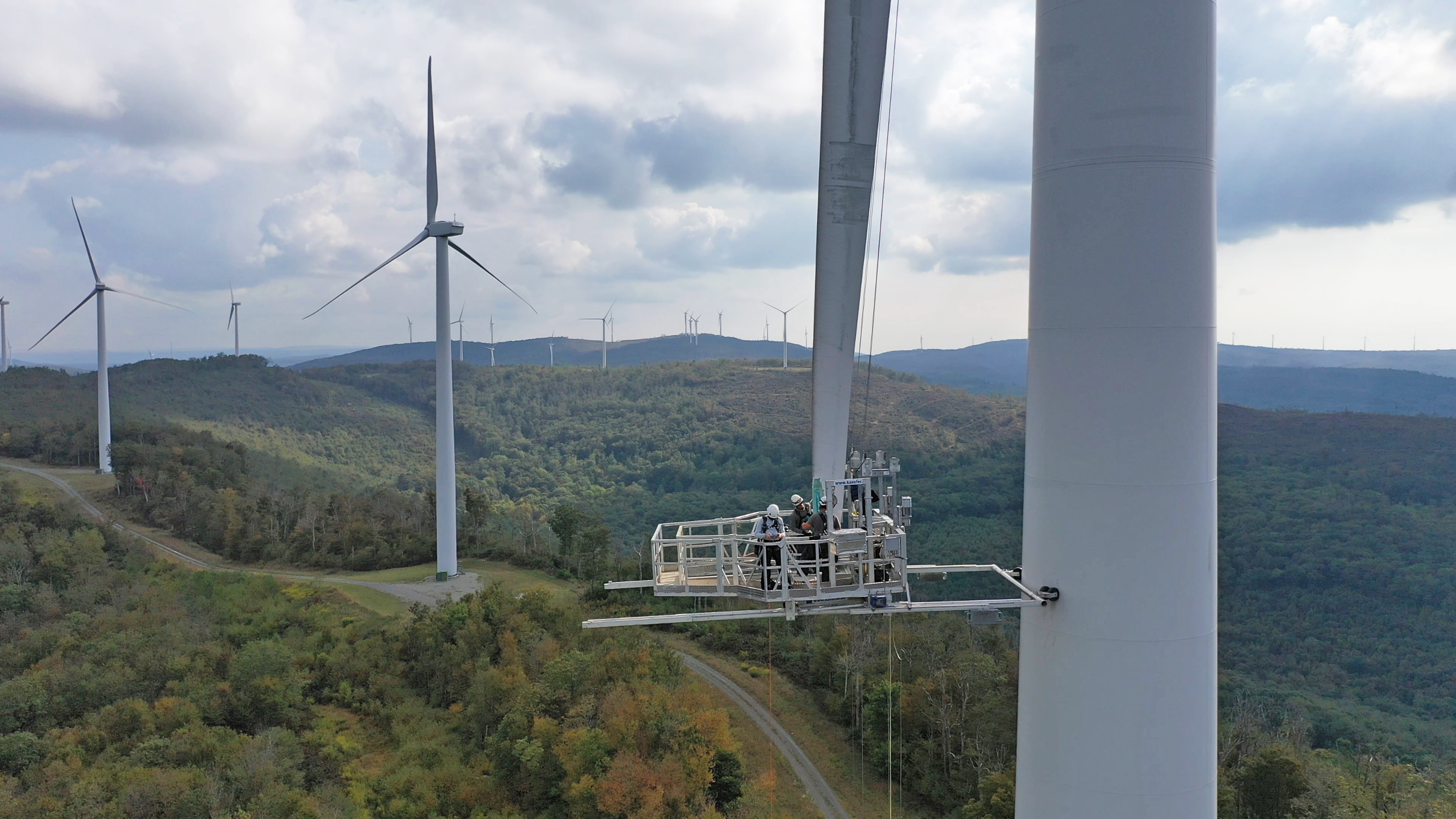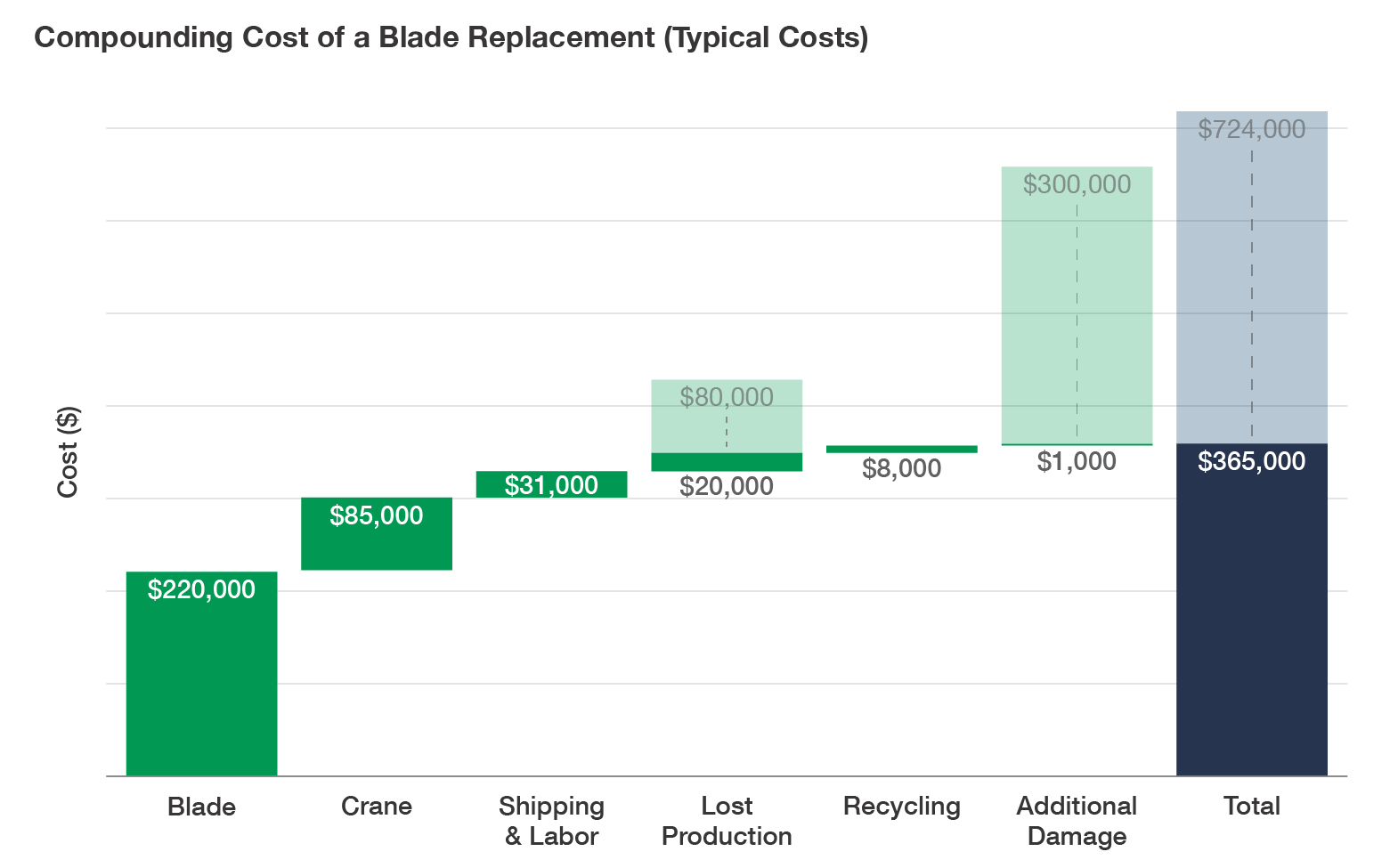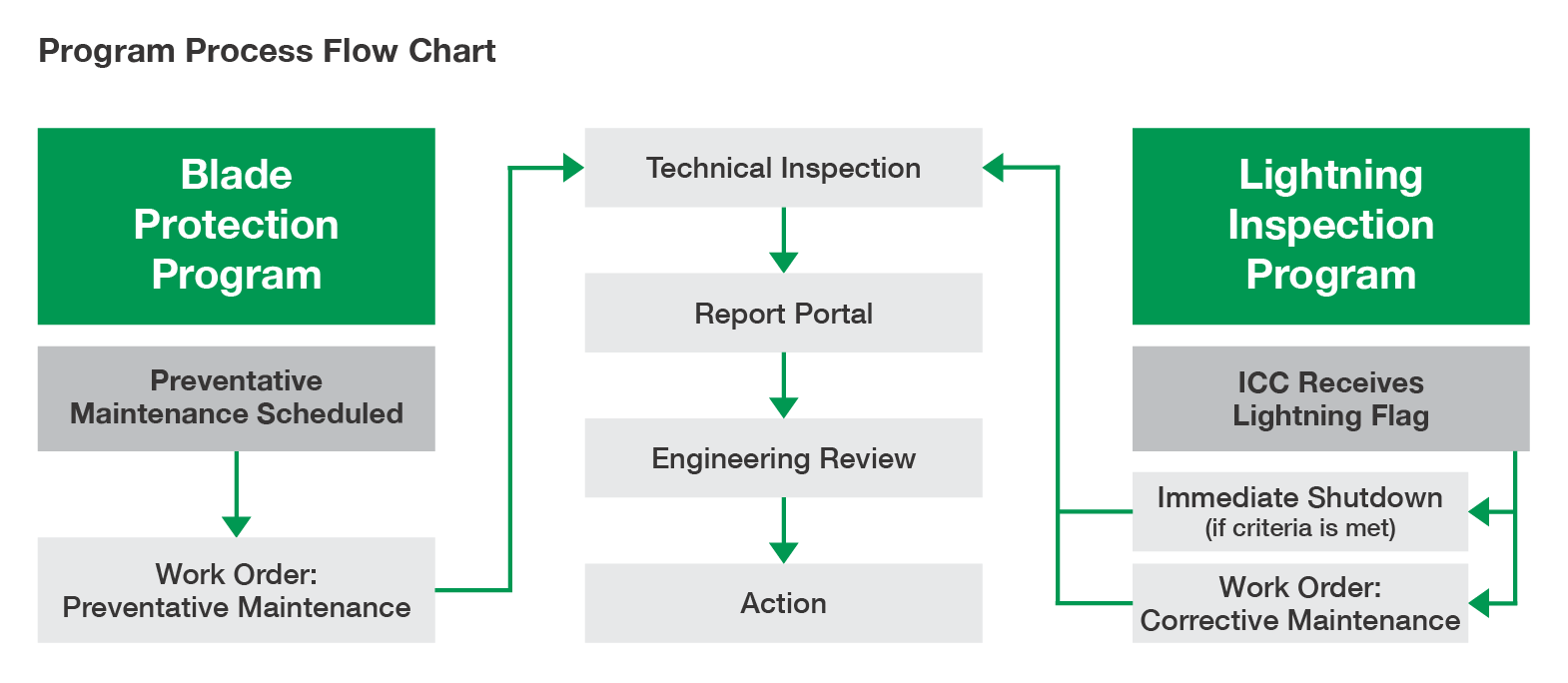Clean Energy
Expertise
Projects
Invenergy Services
Partners
Who We Are
News & Insights

by Invenergy Team

By implementing a blade protection program, Invenergy is able to minimize catastrophic blade failures & maximize turbine availability. Invenergy takes a life-extension minded approach to power generation operations.
Invenergy’s primary goal in the operations of wind generation facilities is to maximize turbine value through optimized operations and maintenance practices. Wind turbine blades are among the largest costs associated with operating wind facilities. Invenergy experienced more than expected blade failures due to force majeure events leading up to 2014. With over 1,500 turbines, and with a real threat to certain project economics, the Invenergy Operations Engineering team developed a plan to prevent as many unexpected failures as possible. Through an operations engineering continuous improvement initiative, the Blade Protection Program was developed utilizing experts from the Invenergy Control Center, Field Services, and Engineering teams.
WhyA catastrophic blade failure has the potential to shut down a wind turbine for months, costing hundreds of thousands of dollars. The return to service time is based on various factors including geographic location, crane service availability, and weather. Typical blade replacement costs are outlined in the chart below.

HowInvenergy took both a proactive and reactive approach, formalizing a Blade Protection Program and a Lightning Inspection Program. The proactive Blade Protection Program was created to monitor wear and tear on blades preventing untreated issues from causing catastrophic failure. The reactive lightning program was created to alert on potential turbine strikes from lightning, identify extent of damage, and repair minor damage up-tower prior to catastrophic failure.
Blade Protection ProgramContinuous operations of a wind turbine, combined with ambient conditions in certain geographic locations, can cause various forms of damage leading to degradation of performance or more complicated repairs. Every blade within the fleet is inspected a minimum of once every three years. These inspections ensure operational wear and tear is caught early to reduce repair efforts and costs, as well as minimize turbine performance degradation.
Lightning Inspection ProgramUtilizing GPS coordinates, the Invenergy Control Center uses daily reports and real-time lightning alerts for managing local inspections and remote shutdowns. Through optimized data analytics, Operations Engineering use corresponding polarity, amplitude and distance from turbine, to determine acceptable criteria to warrant blade inspections or turbine shutdowns. The Control Center creates blade inspection work orders for the site post receipt of the daily lightning report. Field technicians inspect the necessary turbines following storms using ground-mounted telescopic lenses or drone technology as well as 360 camera devices for internal blade inspections, if needed. Technicians are trained in the use of blade inspection cameras and inspection reporting software to deliver detailed reports to the report portal.

ExampleIn 2017, the Invenergy Control Center received an alarm for a lightning strike on a turbine at the Orangeville Wind Facility in New York, and immediately shut it down. By the next morning, field technicians inspected the turbine, and the Engineering team determined to keep it down until a repair could be made. A temporary repair was made in order to get the turbine back online, running safely and producing a reduced power level through the winter. The final long-term repair was made later in the year when crane costs could be minimized, making it a more cost effective repair. While this turbine required two separate repairs to return it to 100% service, those costs were a fraction of the other alternative; a full blade replacement. If the damage caused by the lightning strike went undetected, the blade would have ultimately seen a catastrophic failure. In a best-case scenario, the blade would have failed and caused no damage to other turbine components, and therefore minimizing the potential financial impact. In the worst-case scenario, blade failure could have significantly damaged the entire unit, requiring full generator replacement and major financial loss on a scale of millions of dollars versus hundreds of thousands. Invenergy ultimately saved hundreds of thousands of dollars due to the effectiveness of our Lightning Inspection Program and working smartly to get the turbine back online producing power as quickly as possible.
Final TakeawaysInvenergy’s robust Blade Protection and Lightning Inspection Programs, combined with engineering review and continuous feedback from the sites, provide value to the operating fleet by reducing operating expenses and maintaining an industry-leading production-based availability.
Interested in learning more about the Invenergy Blade Protection Program?Contact Brad Purtell, Director, Invenergy Services Business Development at bpurtell@invenergy.com to learn more.
Expertise
Projects
Invenergy Services
Partners
News & Insights
© 2023 Invenergy